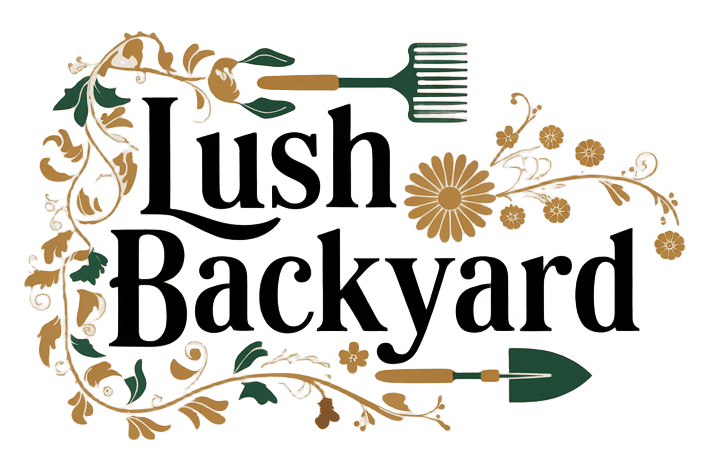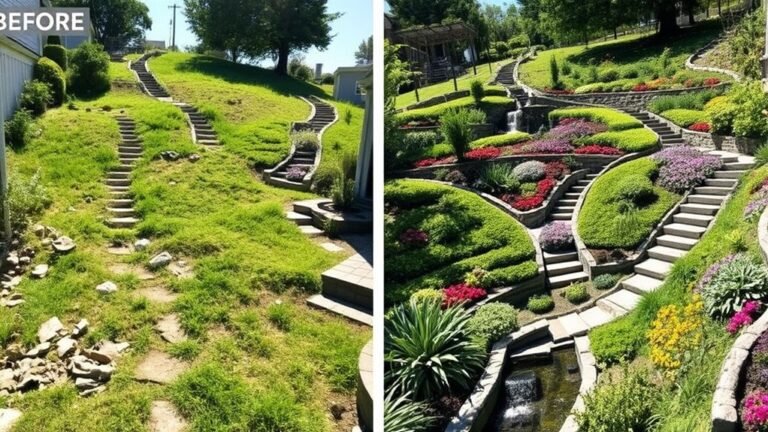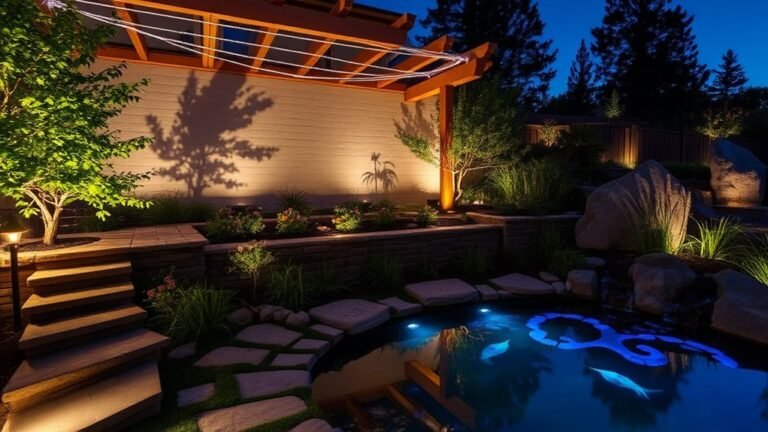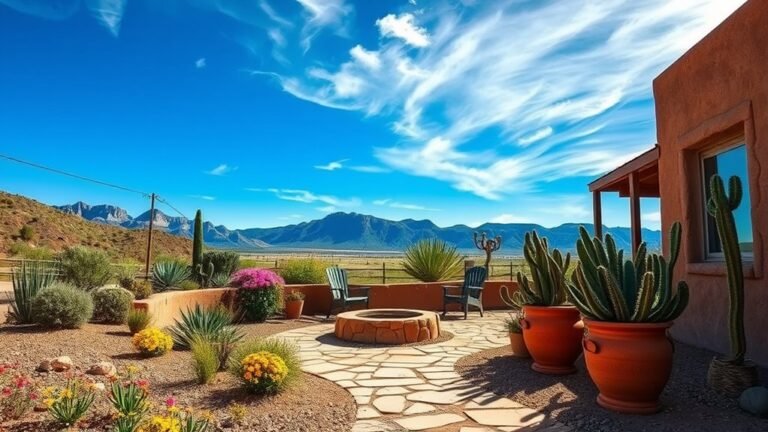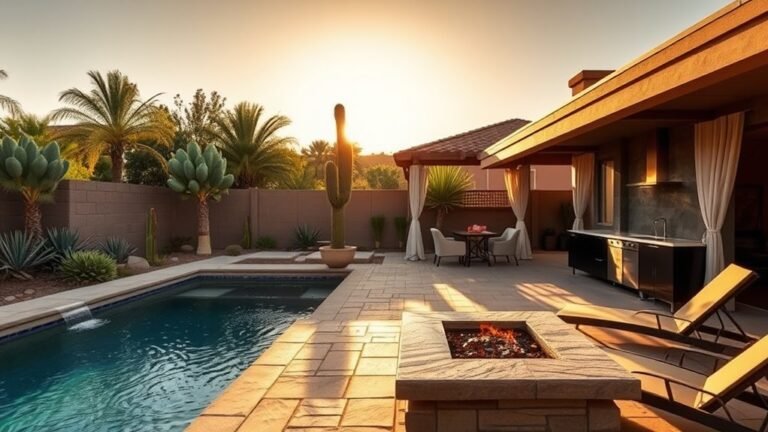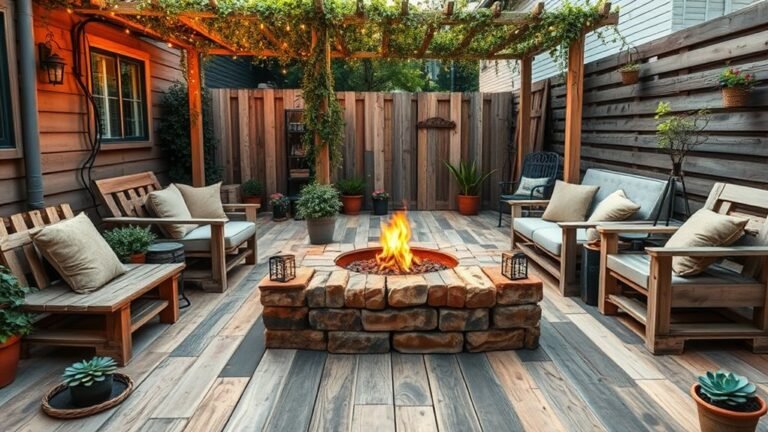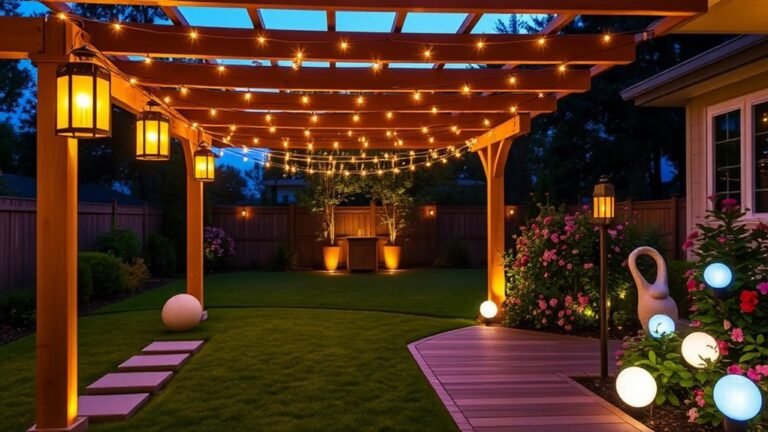12 Landscaping Ideas for Muddy Backyards
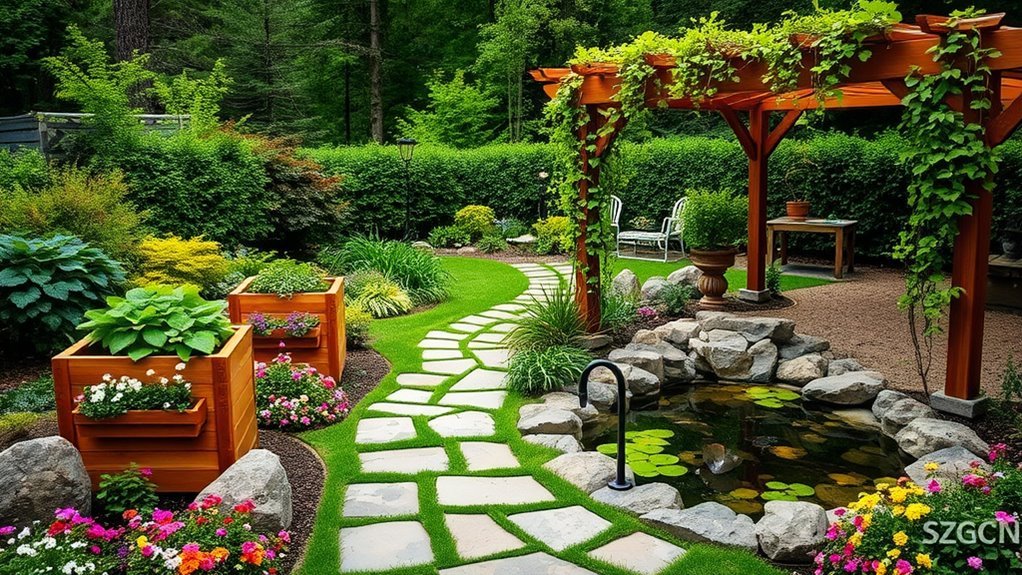
Dealing with a muddy backyard can be frustrating, but there are effective landscaping solutions that can transform your space. Consider options like French drains or a rain garden to improve both function and appearance.
With a few simple changes, you can create an inviting outdoor retreat that alleviates the mud problem. Let's explore practical landscaping ideas that could make a significant difference in your backyard.
Install French Drains
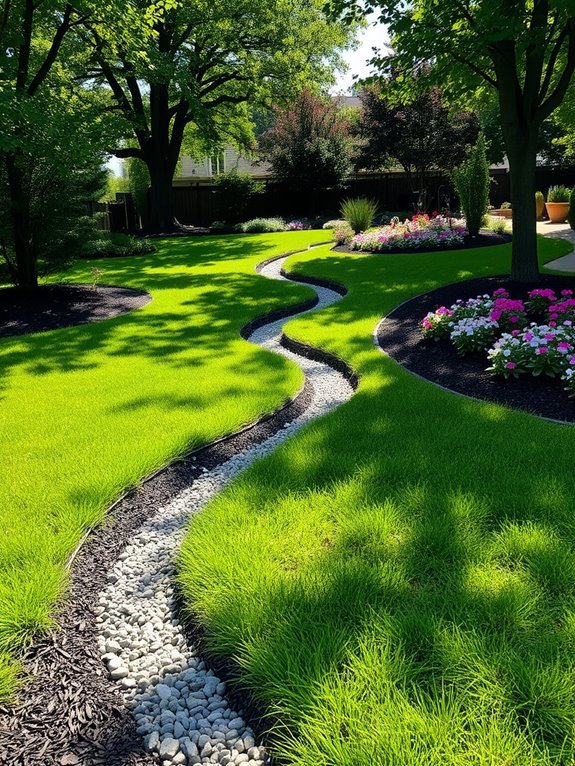
If you're dealing with a muddy backyard, installing French drains can be a game changer. French drains efficiently remove excess water, ensuring you can enjoy your outdoor space without squishy shoes or muddy paw prints in your home.
To get started, identify a location where water pools, and dig a trench at least 18 inches deep, sloping it away from your foundation to redirect water safely.
Lay down gravel, followed by a perforated pipe, and cover it with more gravel. You now have a functional drainage system.
For added aesthetic appeal, consider surrounding the drain with decorative stones.
With French drains, you'll not only eliminate mud but also enhance the beauty of your backyard. Get ready for a dry, happy yard—muddy days are about to be history!
Create a Rain Garden
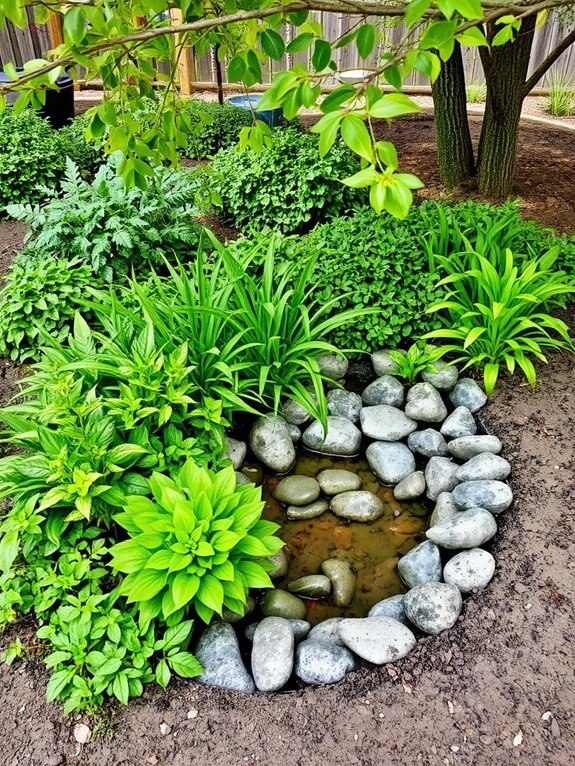
Creating a rain garden effectively manages excess water while enhancing your backyard's beauty and biodiversity. Imagine a vibrant space where rainwater nourishes a flourishing garden instead of forming muddy puddles. By using native plants suited for wet conditions, you'll invite butterflies, birds, and other wildlife, bringing life to your yard.
Start by identifying a low area in your yard, preferably near downspouts or water-collecting spots. Dig a shallow depression and enrich it with a blend of soil and compost for optimal drainage. Here's a quick guide to selecting plants for your rain garden:
| Plant Type | Benefits |
|---|---|
| Native Grasses | Erosion control, habitat |
| Flowering Plants | Attract pollinators |
| Shrubs | Visual interest, privacy |
| Perennial Herbs | Culinary use, fragrance |
Use Gravel Pathways
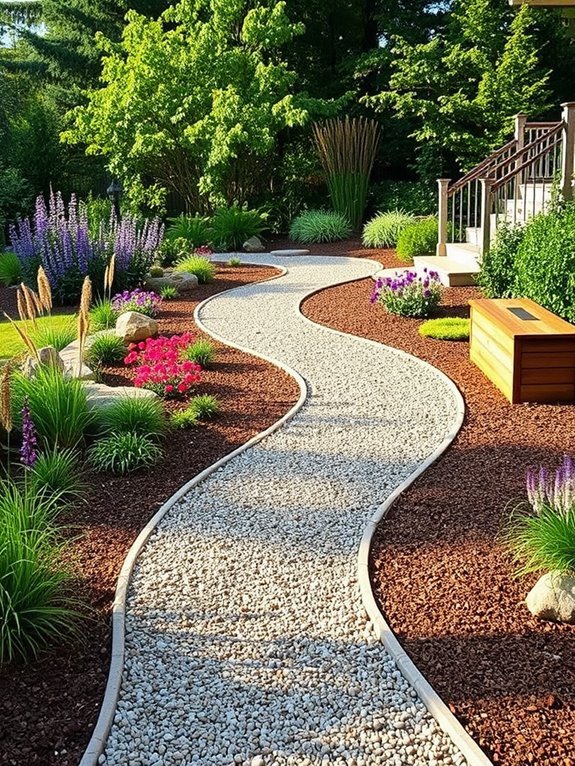
Muddy backyards can be challenging, but gravel pathways can enhance your outdoor space, keeping it functional and visually appealing.
Picture stepping onto a solid surface that keeps your shoes clean and your spirits high! Gravel pathways not only minimize mud but also add a rustic charm to your garden.
To create a winding path, mark your desired route and dig a shallow trench.
Lay landscape fabric to block weeds, then fill the trench with your chosen gravel—smooth pebbles or crushed stone, depending on your style.
As you walk on your new path, enjoy the pleasant crunch underfoot and how it meanders through your garden.
Gravel's excellent drainage prevents water from pooling, eliminating mud concerns.
Transform your backyard into a fun, accessible area for everyone by rolling up your sleeves and getting creative!
Add Permeable Pavers
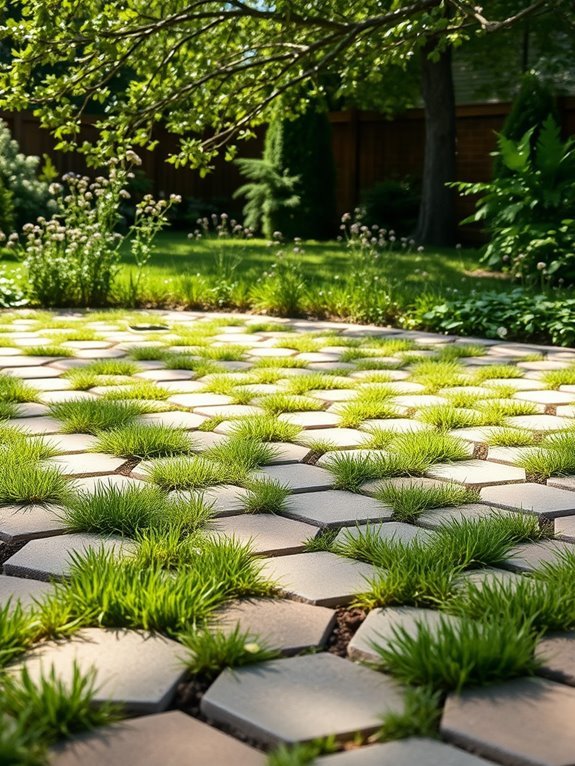
To address mud issues in your backyard, consider adding permeable pavers. These stylish pavers allow water to flow through, reducing puddles and keeping your yard dry, so you can stroll across your patio without soggy shoes.
Permeable pavers come in various materials and designs, catering to all aesthetic preferences, whether you favor rustic cobblestones or a sleek modern look.
They're also easy to install, making for a fun weekend project with family or friends—just gather some snacks, play music, and get started!
In addition to controlling mud, permeable pavers filter rainwater, benefiting the environment.
You'll enhance your outdoor space while reducing runoff. Transform your muddy backyard with permeable pavers for a functional and attractive area that keeps your shoes clean and impresses your guests.
For more inspiration and options, you can explore the range of stylish pavers available on our website to transform your backyard into an inviting oasis.
Incorporate Retaining Walls
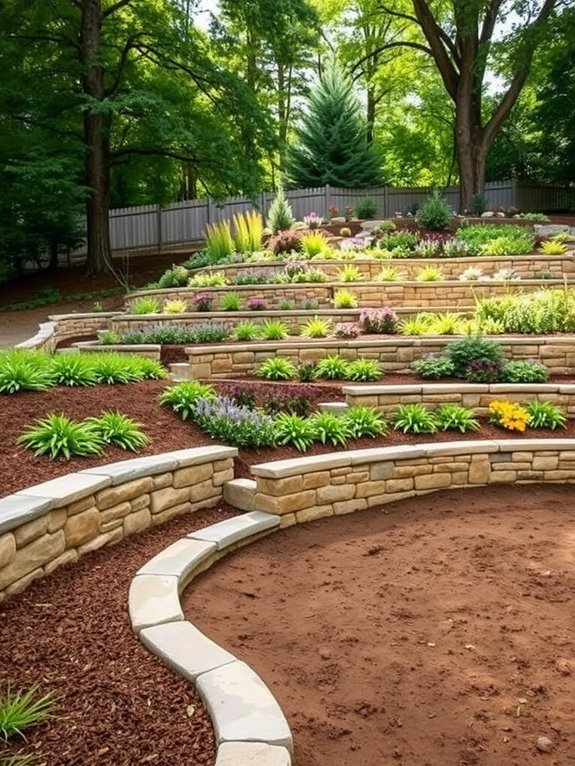
Permeable pavers address muddy backyards, but adding retaining walls can significantly enhance your outdoor space. These walls provide structure and manage water runoff, keeping your yard organized and drier. They allow you to create beautiful terraces, making your outdoor area both visually appealing and functional.
Transform a sloped, muddy area into a stunning multi-level garden with defined spaces for flowers, vegetables, or a cozy fire pit. Retaining walls also add style, giving your backyard a chic look that might make your neighbors envious.
Here's a quick comparison of common retaining wall materials to aid your decision:
| Material | Pros | Cons |
|---|---|---|
| Concrete Block | Durable, versatile | Can be expensive |
| Natural Stone | Aesthetic, blends well | Heavy, requires skill |
| Timber | Cost-effective, easy to install | Less durable, rots over time |
Plant Ground Cover
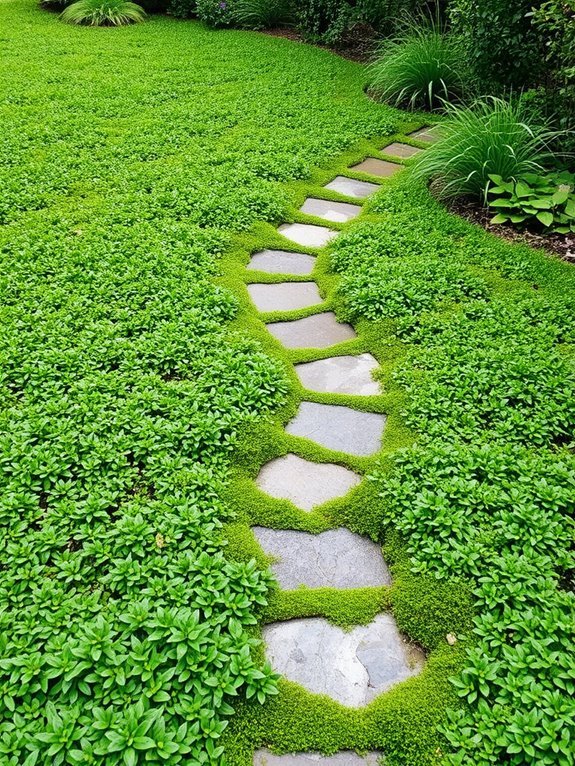
One effective solution for muddy backyards is planting ground cover. It enhances the beauty of your space and helps absorb excess moisture, keeping your yard drier. Imagine stepping outside and not feeling like you're wading through a swamp—sounds great, right?
When selecting ground cover, consider your yard's sunlight and soil type. For sunny areas, options like creeping thyme or clover are low-maintenance and produce lovely blooms. For shadier spots, moss or ajuga thrive in lower light environments.
Ground covers grow thick and lush, forming a natural mat that prevents mud from splashing onto your shoes—a definite plus! Kids and pets will enjoy the soft, cushy feel underfoot.
Planting ground cover is essentially a makeover for your yard, transforming a muddy mess into a vibrant oasis.
Build a Dry Creek Bed
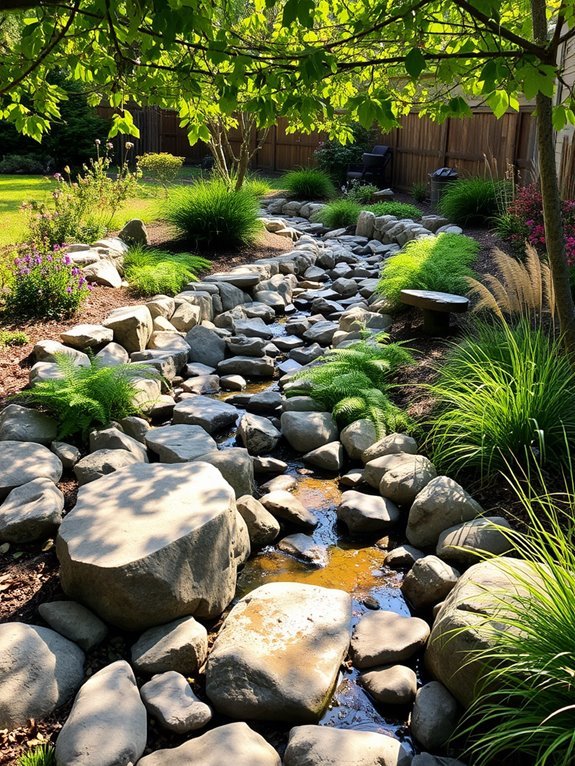
To manage water runoff in your muddy backyard stylishly, consider building a dry creek bed. This effective landscaping feature controls erosion and directs water flow while adding charm to your yard.
Start by selecting a pathway where water typically flows and outlining your creek bed with a garden hose or rope, creating gentle curves for a natural look.
Dig to a depth of about 6 inches; irregularity is fine, as nature isn't symmetrical.
Line the bottom with landscaping fabric to prevent weeds, then fill it with gravel or smaller stones. This not only improves aesthetics but also allows water to flow without forming mud puddles.
Adding decorative lighting along the edges of your dry creek bed can enhance its visual appeal and provide ambiance to your garden during evening hours.
Think of this project as an art endeavor—your backyard is the canvas!
Enjoy the process, and soon you'll have a beautiful and functional dry creek bed.
Utilize Decorative Rocks
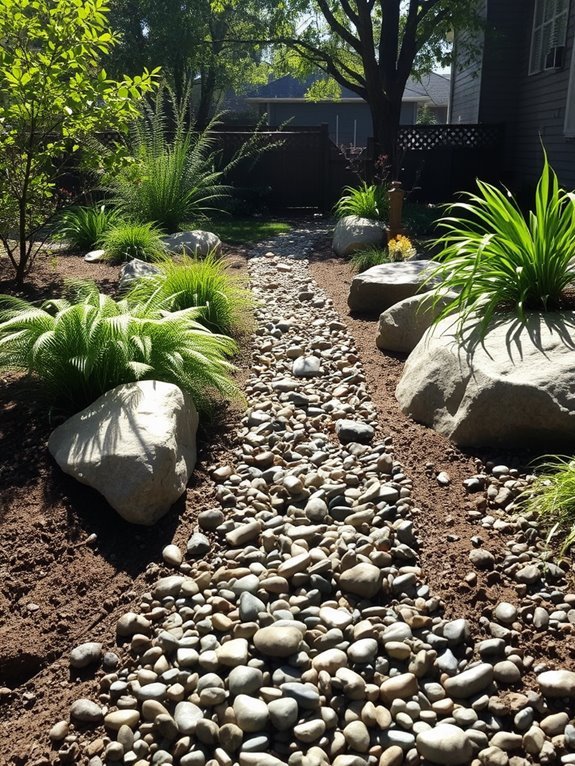
Decorative rocks can transform a muddy backyard into an appealing space while addressing drainage issues. They offer both aesthetic and practical benefits, minimizing mud puddles and creating a more inviting area with low maintenance.
Here are some ideas to enhance your yard with decorative rocks:
- Pathways: Create a charming stone path through your garden.
- Borders: Outline flower beds or garden features with rocks for added structure and style.
- Accent Areas: Design a rock garden with various sizes and colors for visual interest.
- Ground Cover: Use smaller pebbles in muddy spots to prevent erosion and keep shoes clean.
- Water Features: Surround fountains or ponds with rocks for a natural look.
Design Raised Garden Beds
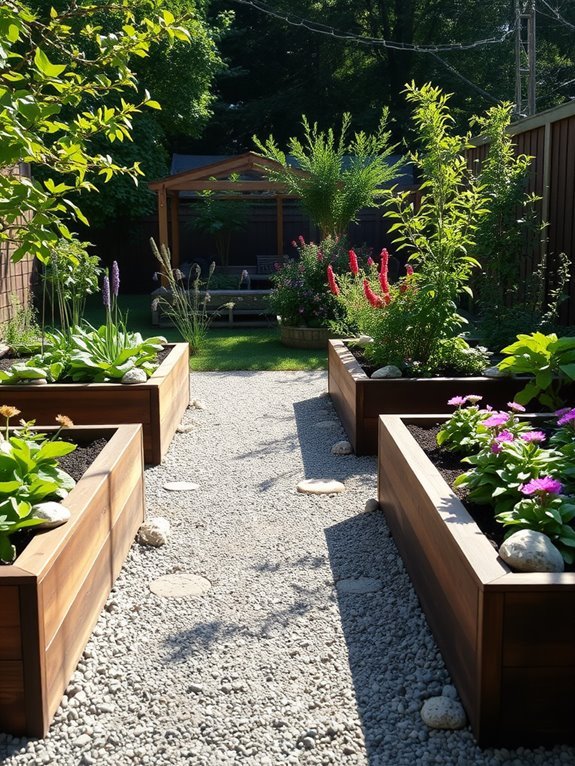
Designing raised garden beds is a smart solution for muddy backyards, keeping plants above the muck while enhancing your yard's aesthetic. You'll feel like a gardening rockstar as you watch your plants thrive!
When planning your raised garden bed, consider size, materials, and layout. Here's a quick guide:
| Aspect | Ideas |
|---|---|
| Materials | Cedar, recycled wood, or bricks |
| Size | 4×8 feet, 3×6 feet, or custom size |
| Layout | Linear, L-shaped, or tiered |
Mix and match styles for a unique look! For a rustic vibe, choose weathered wood; for a modern touch, opt for sleek metal beds. The options are endless.
Implement Turf Alternatives
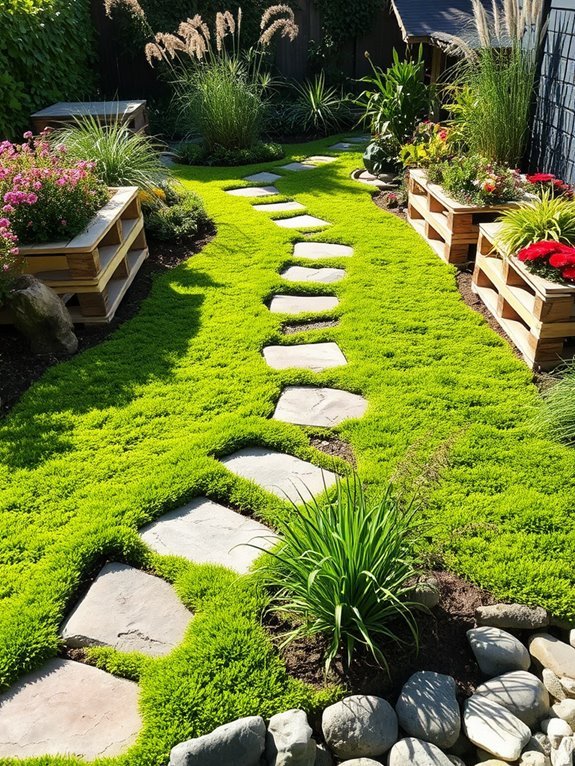
Muddy backyards can be tough to maintain, but turf alternatives offer a durable and attractive solution. Instead of traditional grass, consider heat-tolerant options that excel in wet conditions.
These alternatives not only enhance your outdoor space but also minimize mud.
Here are some excellent turf alternatives:
- Creeping Thyme: A fragrant ground cover that withstands foot traffic and requires minimal upkeep.
- Moss: Ideal for shady areas, moss creates a lush green carpet and is eco-friendly.
- Clover: Fast-growing, low-water, and beneficial for pollinators.
- Sedum: Drought-resistant succulents available in various colors and textures.
- Ornamental Grasses: Tall, feathery plumes that visually impress while thriving in wet conditions.
Create a Seating Area
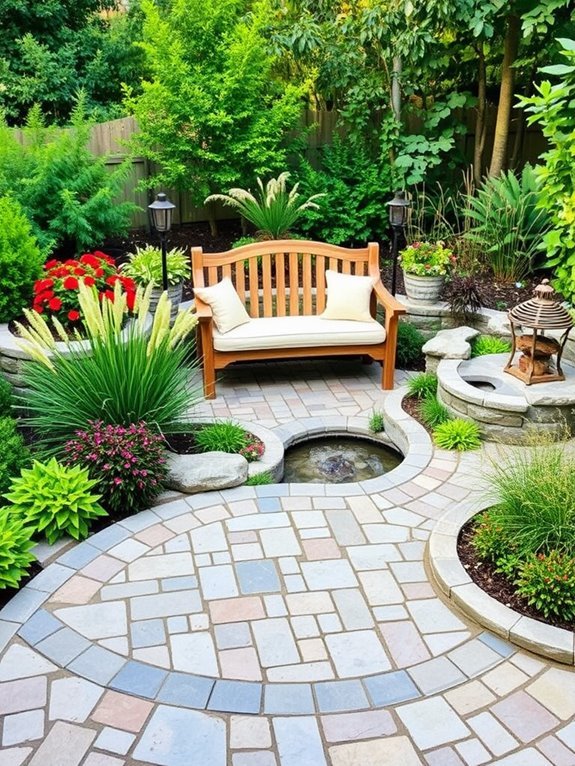
Creating a cozy seating area can transform a muddy backyard into a welcoming retreat for relaxation and outdoor enjoyment.
Start with a solid, stable base like pavers or gravel to ensure a dry, level surface.
Choose weather-resistant furniture in styles like teak or resin wicker, and add colorful cushions for comfort.
Incorporate multi-functional furniture to save space and serve various purposes, making the most of your outdoor area.
Enhance the atmosphere with string lights or a small fire pit for evening gatherings, perfect for hosting s'mores nights.
Don't forget a small side table for snacks or drinks.
With this setup, muddy backyards become inviting spaces for nature, entertaining friends, or soaking up the sun—your outdoor oasis awaits!
Enhance With Native Plants
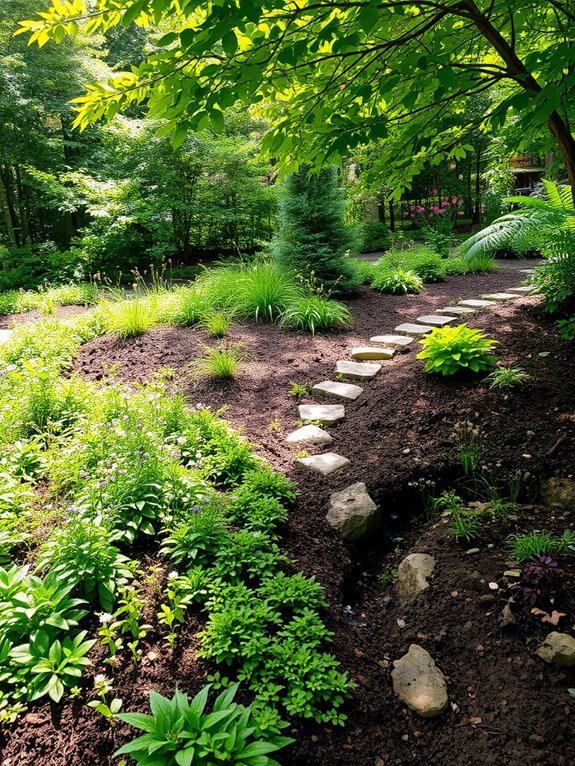
After setting up your cozy seating area, consider enhancing it with native plants that thrive in your region.
These plants not only look great but are also easier to maintain and beneficial for local wildlife. Think of them as the ideal guests at your garden party—always a perfect fit!
Here are some native plants to consider:
- Black-eyed Susans – Bright, sunny blooms.
- Butterfly weed – Attracts butterflies and adds color.
- Swamp milkweed – Thrives in wet spots and attracts pollinators.
- Joe Pye weed – Tall, adds vertical interest.
- Wild geraniums – Delicate flowers that provide charm and ground cover.
Frequently Asked Questions
How Can I Prevent Mud From Forming in My Backyard?
To prevent mud from forming in your backyard, you've got a few fun options!
First, consider adding gravel paths or stepping stones; they'll keep your feet clean and stylish!
Next, think about planting grass or ground cover—nature's way of soaking up all that moisture.
You might also want to install a drainage system; it's like giving your yard a little spa treatment.
With these ideas, you'll be mud-free and ready for fun!
What Are the Best Plants for Muddy Conditions?
When you're dealing with a bit of a soggy situation, fear not! Some plants absolutely thrive in muddy conditions.
Consider adding lush ferns, vibrant astilbes, or cheerful irises to your garden. These beauties love the moisture and will create a stunning display.
You could even try some marsh marigolds for a splash of color!
With the right choice of plants, you'll turn that puddle paradise into a flourishing green haven in no time!
How Much Does Landscaping for Muddy Yards Typically Cost?
When it comes to landscaping costs, you're looking at a range depending on what you want. Simple projects might start around a few hundred bucks, while more elaborate designs can skyrocket to thousands!
Factors like materials, labor, and size of the area play a big role. So, if you're dreaming of a beautiful yard, it's smart to budget wisely.
Just remember, it's all about making your outdoor space fun and functional!
Can I DIY These Landscaping Solutions or Hire a Professional?
When it comes to tackling landscaping, think of it as a dance—you can lead or follow!
If you're feeling adventurous, grab your tools and plunge into DIY solutions; it's a great way to get your hands dirty and release your creativity.
However, if you'd rather sip lemonade while someone else sweats, hiring a pro might be your groove.
Either way, you're stepping toward a beautiful transformation, and that's what counts!
How Long Will It Take to See Results From These Landscaping Ideas?
You'll see results from your landscaping ideas in no time!
Depending on what you choose, it could take a few weeks to a few months. For instance, grass might sprout within a couple of weeks, while trees and shrubs may take longer to establish.
Patience is key, but don't worry! Watching your space transform is exciting.
Just think of it as nature's slow-motion magic show—without the rabbits, of course!
Conclusion
Transforming a muddy backyard can be an exciting project. With creativity and effort, you can create a vibrant outdoor oasis.
Imagine sipping coffee on a cozy bench, surrounded by colorful blooms, while your kids play in a rain garden. By embracing these ideas, you can conquer the mud and create a joyful haven for relaxation.
So, roll up your sleeves and watch nature's magic unfold!
